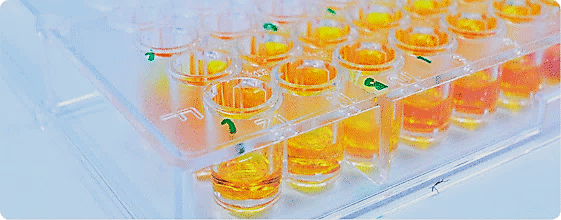Clinical Utility of Anti-Platelet Factor 4 ELISA Test Characterized
By LabMedica International staff writers
Posted on 29 Nov 2015
Diagnosing heparin-induced thrombocytopenia, a potentially catastrophic immune-mediated disorder, continues to pose significant challenges for clinicians, as both clinical and laboratory tools lack specificity. Posted on 29 Nov 2015
There is mounting evidence supporting a positive correlation between definitive heparin-induced thrombocytopenia and optical density (OD) positivity from the widely available anti-platelet factor 4 enzyme-linked immunosorbent assays (PF4 ELISAs); however, the clinical features distinguishing these patients remain poorly understood.

Image: LIFECODES PF4 Enhanced and PF4 IgG anti-platelet factor 4 enzyme-linked immunosorbent assays have been designed to detect antibodies that have been implicated in causing Heparin Induced Thrombocytopenia (HIT) (Photo courtesy of Immucor GTI Diagnostics).
Scientists at the NYU Langone Medical Center (New York, NY, USA) conducted a case-controlled, retrospective chart review of patients from two large, urban academic institutions who underwent a PF4 ELISA at a central laboratory between July 1, 2009, and July 1, 2014. PF4 ELISA assay is a polyimmunoglobulin assay (anti-immunoglobulin G (IgG)/IgAIg/M) utilizing 60 units of heparin in the positive control. Internal positive and negative control values were recorded for each patient’s PF4 ELISA.
The PF4 ELISA testing was performed using the LIFECODES PF4 Enhanced assay kit (Immucor GTI Diagnostics, Inc., Waukesha, WI, USA). In total, 184 negative patients (OD less than 0.7), and 121 positive patients (OD greater than 0.7), including 74 low-positive patients (0.7, OD less than 1.4) and 47 high-positive patients (OD greater than 1.4) were identified. Several clinical variables were significantly different in the negative group compared with the positive group, including hospital day, previous admission within the past three months, and the presence of a new thrombus. However, many of these variables were not different between the negative and low-positive group, and were only distinct between the negative and high-positive group. When the low-positive and high-positive groups were compared, only the 4T score was significantly different.
The authors concluded that patients with high-positive ODs represent a distinct clinical group when compared with low-positive ODs. However, no single characteristic analyzed was able to distinguish those with a low-positive PF4 ELISA OD and those with a high-positive PF4 ELISA OD. Our findings reinforce the clinical utility of the 4T score, which was the only clinical variable that significantly distinguished low-positive and high-positive groups. The study was published on November 19, 2015, in the Journal of Blood Medicine.
Related Links:
NYU Langone Medical Center
Immucor GTI Diagnostics, Inc.













